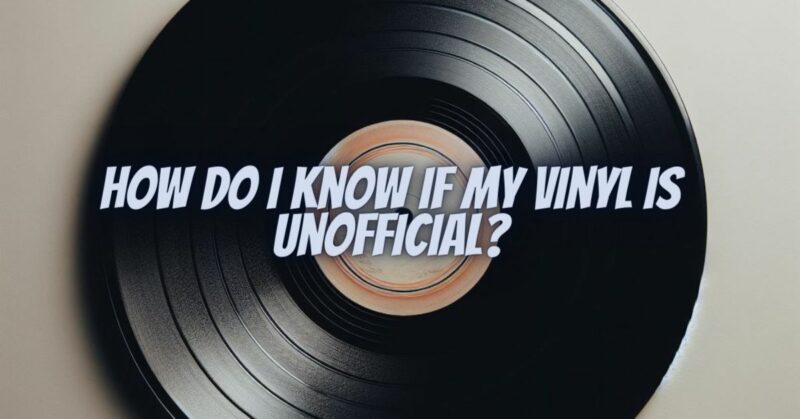Vinyl records have enjoyed a remarkable resurgence in popularity in recent years, attracting collectors and music enthusiasts worldwide. Amid the wide array of records available, one often encounters unofficial or unauthorized vinyl releases. These records, sometimes referred to as “bootlegs,” “counterfeit,” or “unofficial,” can be difficult to distinguish from official releases. In this comprehensive guide, we will explore various methods and techniques to help you determine if your vinyl record is unofficial.
Understanding Unofficial Vinyl Releases
Unofficial vinyl releases encompass a range of records that are not officially authorized by the artist, record label, or music publisher. They include bootleg records, unauthorized reissues, and “grey market” releases. These records can be sourced from live recordings, unreleased tracks, or alternative studio versions and are typically created without permission.
1. Check the Label and Catalog Number
One of the first steps in identifying an unofficial vinyl record is to examine the label and catalog number. Official releases typically include a legitimate label name and a unique catalog number associated with the record label’s catalog. Bootlegs and unofficial releases may attempt to mimic these details, but discrepancies can often be spotted upon closer inspection.
2. Examine the Artwork and Packaging
Unofficial vinyl releases often attempt to replicate the artwork and packaging of official releases. Look for signs of low-quality printing, blurry images, misspelled text, or color discrepancies. Official releases usually feature high-quality, professionally designed artwork and packaging.
3. Research the Release History
Conduct research on the specific album you have in question. Official releases typically have well-documented release histories, including release dates, pressing plants, and label variations. If you find inconsistencies or a lack of information about the supposed release, it could be a red flag.
4. Investigate the Source and Content
Consider the source of the material on the vinyl record. Unofficial releases may include content that is not readily available through official channels, such as live recordings, unreleased tracks, or alternative versions. Check whether the content is sourced from reputable recordings or if it appears to be of low quality.
5. Inspect the Vinyl Quality
The quality of the vinyl itself can provide clues about the authenticity of the record. Official releases are typically pressed on high-quality vinyl that is well-centered and free from imperfections. Unofficial releases may exhibit uneven thickness, warping, or surface noise due to the use of inferior materials and manufacturing processes.
6. Verify with Discogs and Collectors’ Communities
Online resources like Discogs and vinyl collectors’ communities can be invaluable for verifying the authenticity of a vinyl record. Discogs, in particular, provides a comprehensive database of official releases, along with user-contributed information and images that can help you cross-reference your record.
7. Seek Expert Opinions
If you are still uncertain about the authenticity of a vinyl record, consider seeking the expertise of experienced collectors, record store owners, or online vinyl communities. These individuals may have encountered similar records and can provide valuable insights.
8. Be Cautious of Limited Edition Claims
Some unofficial releases may claim to be limited editions, special releases, or foreign imports when there is no verifiable information to support these claims. Bootleggers often use such tactics to make their counterfeit records appear more appealing.
Determining whether your vinyl record is unofficial or not requires a combination of careful examination, research, and community engagement. While official releases are typically easy to identify, unofficial records can be more challenging to distinguish. Being vigilant about label details, artwork quality, source material, and conducting thorough research are essential steps in identifying unofficial vinyl releases.
Ultimately, your ability to differentiate between official and unofficial vinyl records will improve with experience and familiarity with the intricacies of the vinyl collecting world. As you build your collection, remember that the joy of vinyl extends beyond its authenticity; it resides in the music and memories each record holds.


